White Whales, Sea Glass and Butterfly Sex
Discoveries of nature and mind on the shores of the Gaspé Peninsula
THE WHALE is a slow, magnificent dream come true, an embodiment of the surreal. Especially the white whale.
Sea glass is unburied treasure. On the beach at our bare feet, it offers mindfulness in the search and a tangible reward in the discovery. Especially the blue glass.
Butterflies occupy a place in mind and nature somewhere in between whales and sea glass. Gossamer, elegant, glittery, they fly barely beyond our grasp, even when they’re mating. Especially the copper butterflies.
White whales, blue glass and copper butterflies were ways of grandeur, awareness and wonder during my retreat with Ruth and our pup Odin at Quebec’s Gaspé Peninsula and St. Lawrence River last week. Although it might be enough to describe them as wondrous things to find or photograph, I’d rather explore notions of experience. So here is my brain on whales, glass and butterflies. Maybe your brain as well.
Whales
The white whale, of course, is fertile turf for explorations of god, nature, frailty, obsession or revenge (or choose your metaphor). Mine was not Melville’s whale but rather a Beluga Whale (Delphinapterus leucas) surfacing in the St. Lawrence River as I sat not far away on shore. Then came another white whale. And another.
Maybe it’s that we share a common ancestor. Or that beings so huge still live on Earth. Or maybe it’s that whales reveal themselves to us with such monumental presence from so foreign a realm. Whatever the case, I find that people might be indifferent to birds or insects or plants, but never to whales. In that sense, whales are like shooting stars: each a dopamine hit, each a gift of the universe, each euphoric. Like a dream come true.
Glass
Sea glass, though not as universal in its rewards, brings me comparable joy and meaning. When I became a beachcomber, only five years ago, I turned my attentiveness from shorebirds and gulls to a kind of walking meditation. Now it matters not that I search the sands for bits of garbage. After all, broken glass tells many stories. And with its sharp edges softened by the waves over the course of decades or more, sea glass is an unusual relic — old trash transformed to new treasure.
Or maybe the predilection is in the hunt for rarity, which I practice as a biologist among the living. Amid the rise of plastic packaging, I do not know if sea glass is becoming scarce. If it is, we beachcombers are like scientists documenting decline, a kind of unnatural extinction of the Anthropocene. But what I do know is that in sea glass there is a taxonomy and hierarchy of rarity owing mostly to color: clear, brown and dark green are common; variations on those are uncommon; shades of blue are rare (I found one); orange, red, yellow and teal are among the ultra-rare, which means that the glass I discovered on the beach (above) in the lovely village of Métis-sur-Mer, Quebec, might be quite a find (although as a novice sea-glasser I’m uncertain if that nugget is close enough to teal in color).
And yet more than the gems or trinkets I might discover on a beach, in the reflections of sea glass I find ease of mind. In the solitary practice of walking and looking down, I escape the inexorable woes of the climate and biodiversity crises, the tyranny of the inbox, our coarsened public discourse, war and injustice, the worst of the human condition. Instead, I’m merely putting one foot in front of the other for bits of glass — nothing more. Like meditation, it is a practice, an attentiveness to the ordinary, my finding meaning in the prosaic, which is a worthy pursuit in everyday life.
Butterflies
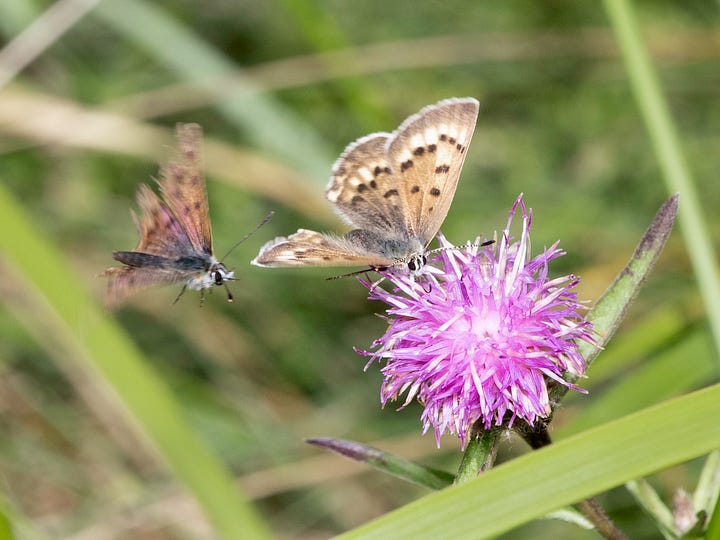
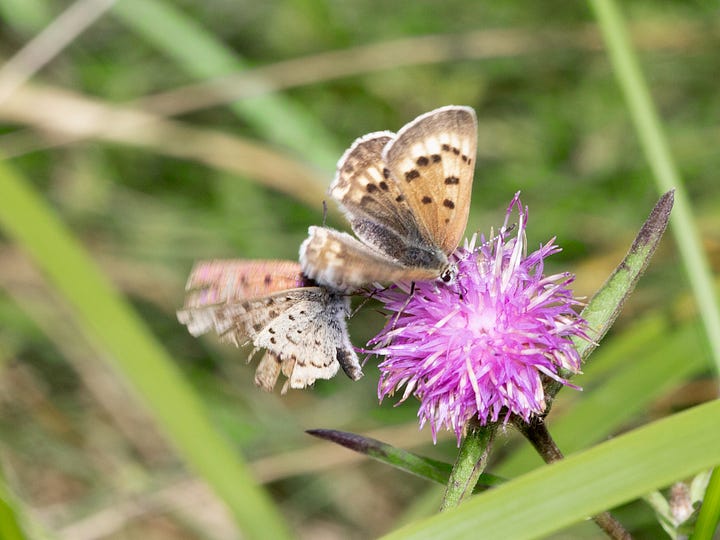
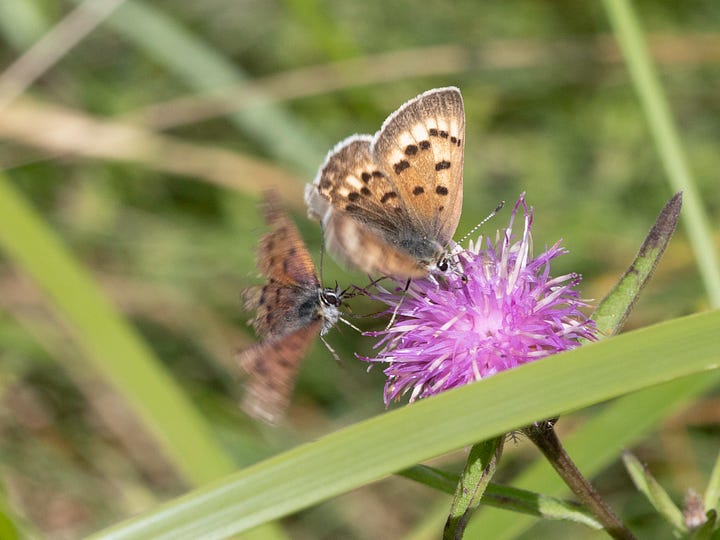

Meanwhile, butterfly sex is, uh, well, you know … complicated. It would have been enough for me simply to find and photograph the rare and tiny Salt Marsh Copper (Tharsalea dospassosi), which flies only in salt marshes of the Canadian Maritime provinces — and nowhere else in the world. What I found as well was a case of unrequited affection: basically a male hot to trot with a female who wanted nothing of it. So before we get to dirty butterfly photos, here (hugely simplified) is how the mating game usually plays out:
Recognition — Ornate and distinctive, butterflies first lay their compound eyes on one another. Simple enough. But this is not always commitment at first sight.
The Approach — The male then makes his moves, which is what we’re seeing in the image series above: a tattered male Salt Marsh Copper flutters and flashes about a female taking her nectar from a thistle flower — an aerial dance that amounts to his giving it his best shot at the singles’ bar. If it’s going well, the male might step it up by directing pheromones toward the female. She might respond with chemicals of her own.
The “Decision” — Although butterflies usually mate more than once, males are able to do so far more frequently than females. So basically among butterflies we have randy males and reluctant females. If she’s receptive, he typically perches beside her and then arches his body sideways so that they can link at the tips of their abdomens (more on this move below). Once joined this way, he deposits in her reproductive tract a packet of sperm. Most insects copulate end-to-end like this.
Rejection — It happens a lot among butterflies. A female, especially if she’s recently copulated, rejects a male’s advances by spinning or turning or flying away from his approach, by fluttering her wings, or quite often by pointing the tip of her abdomen skyward (a bit like flipping him the bird). Basically, these maneuvers prevent him from “docking” with the tip of her abdomen.
In our series above, as the airborne male kept at it, the female turned a bit and fluttered her wings — butterfly posture for “get lost,” which he did. Rejection. She then flew toward me, posing for dignified photos (below) with her wings folded closed and then open to the sunshine. And because she rejected him, my banner image above features for you instead copulating coppers of a different species, Bog Copper (Tharsalea epixanthe) from the province of Ontario on 27 June 2010. (Yeah, that’s some of his sperm oozing out.)
This mating ritual is happening now in gardens, parks, meadows and wherever else butterflies are found; the euphoria of whales or the gifts of sea glass, however, remain in large part elusive to most of us.
And yet this very weekend, the stars will shoot across the heavens of the Northern Hemisphere during the peak of the Perseid Meteor Shower. All we need is to go outside in the dark and gaze out toward the universe for its gifts.

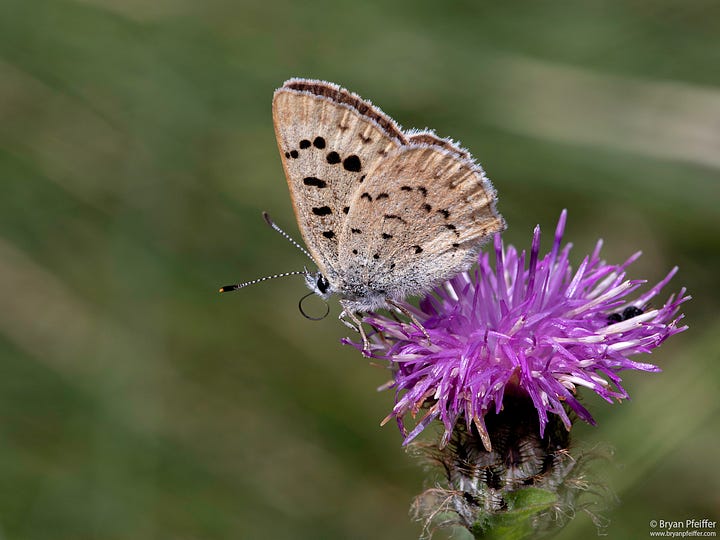
Postscript: More Glass and Dirty Butterfly Photos — and a Request
What is your sea glass? In what ordinary things do you find meaning or transcendence? Well-brewed morning coffee? Weeds growing from cracks in the pavement? Chasing Nature’s paying subscribers (thanks!) can tell us theirs in comments below. I’ve also started a Substack Chat for paying subscribers to submit photos of the ordinary yet sublime.
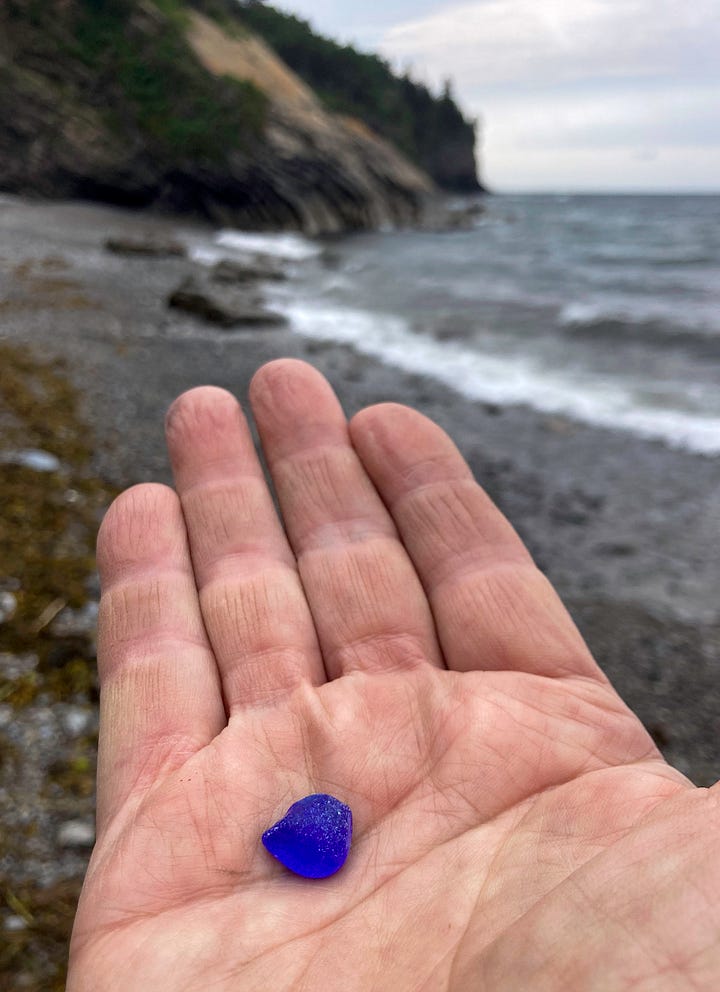
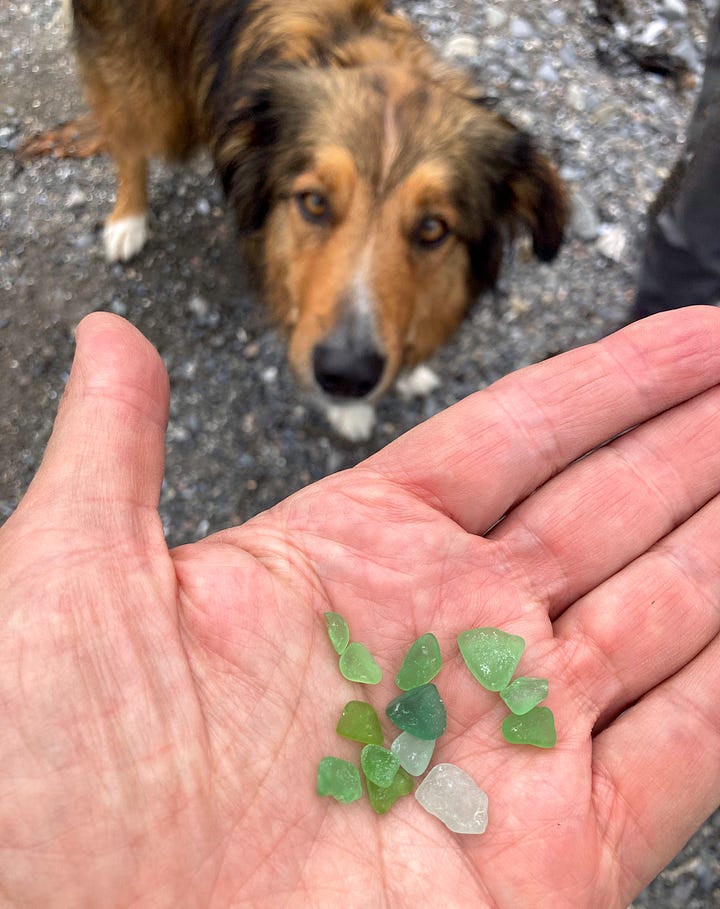

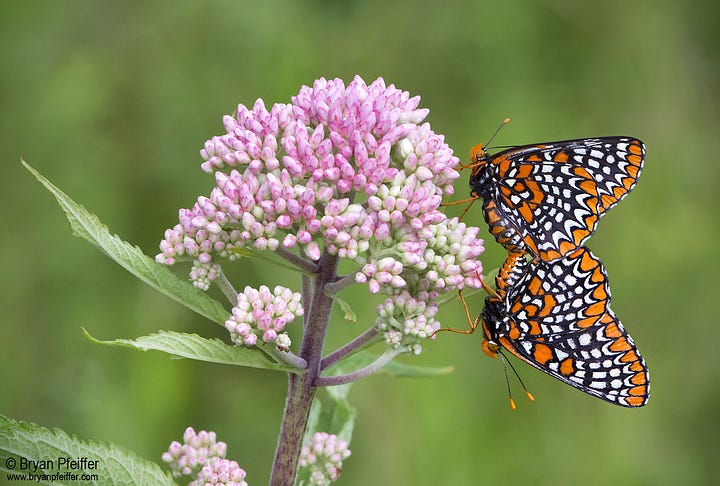
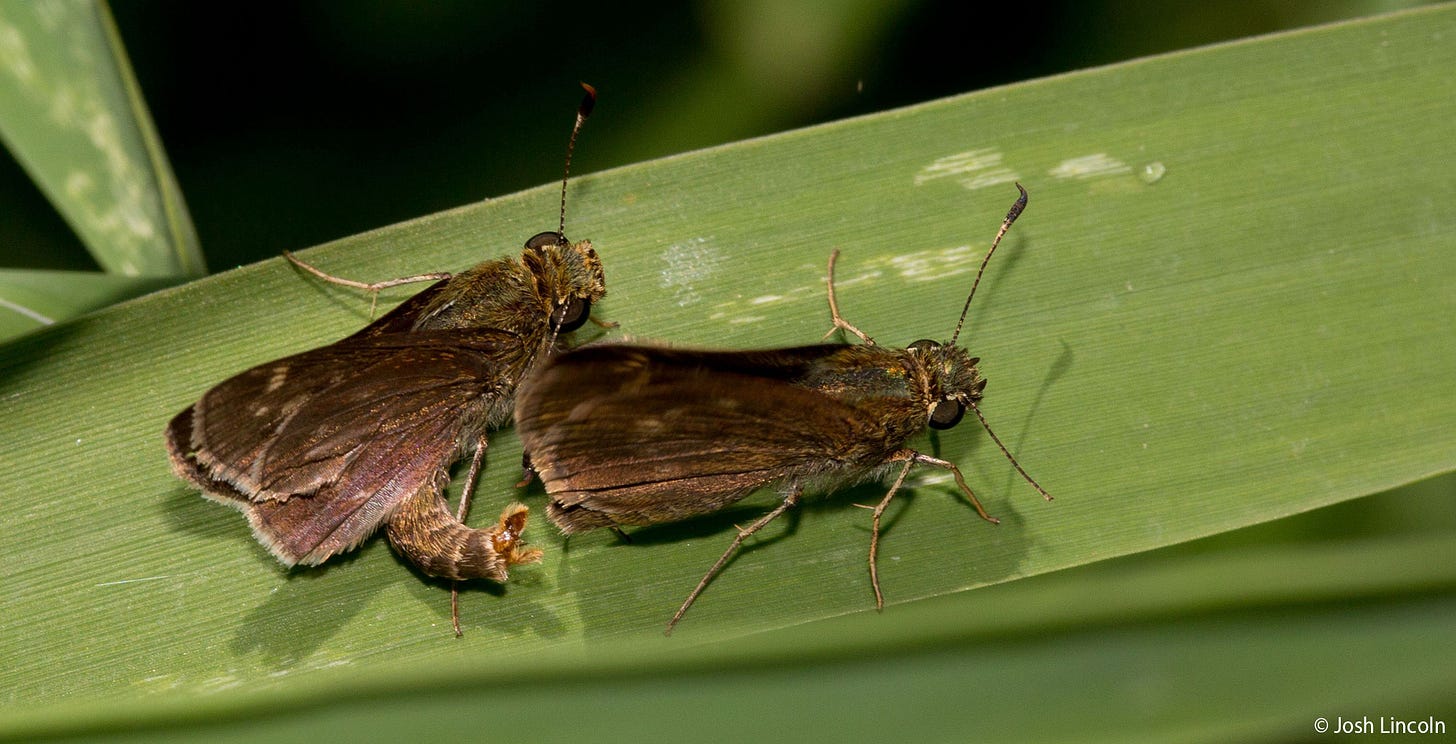
Finally, because I have no Beluga Whale images for you, here’s a gallery and biological information from iNaturalist.




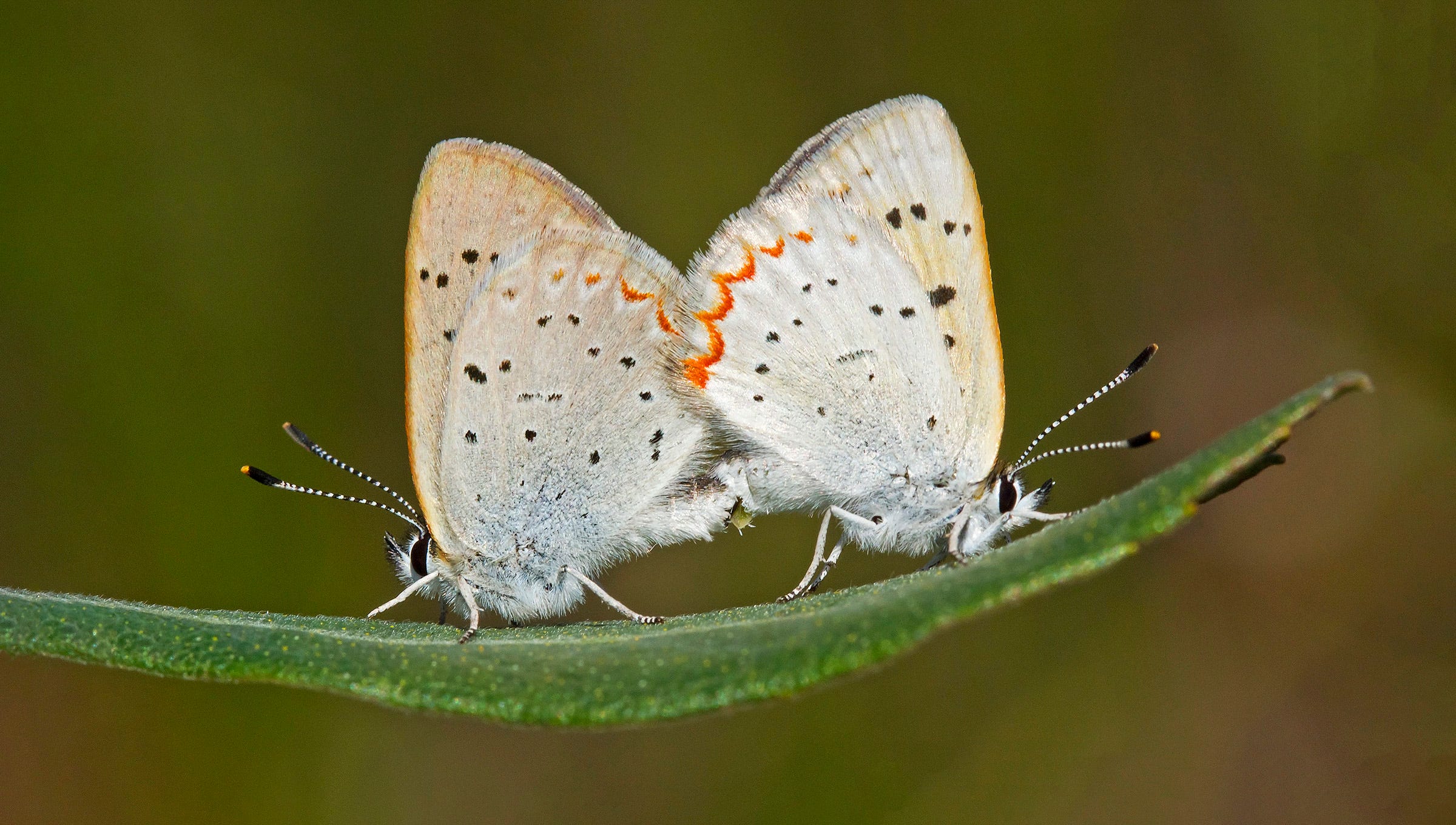
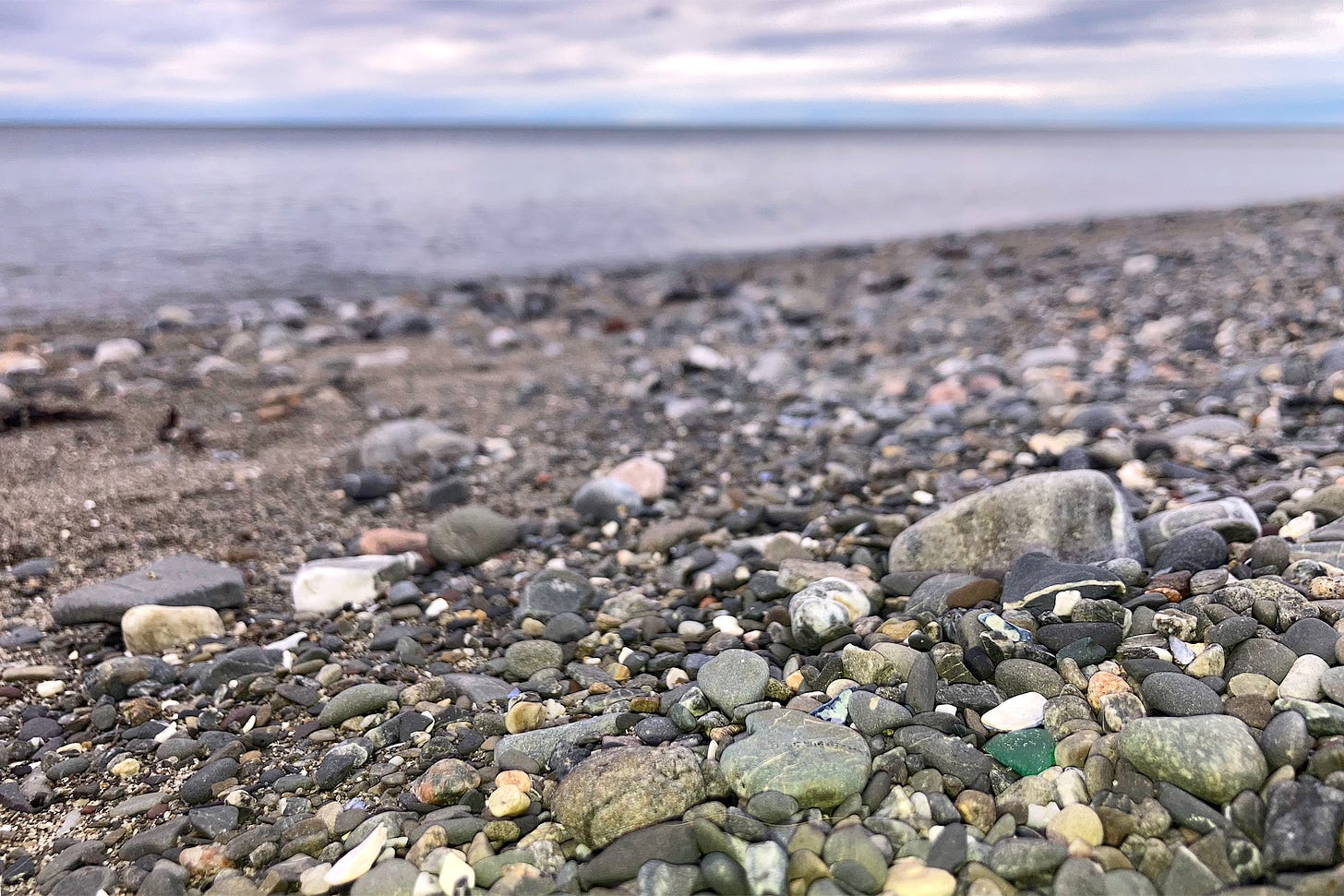
Slime mold hunting. A rush when I think I have found one. So much to discover and experience in these nearby woods.
Golden chanterelles. I say I like to walk at a chanterelle pace as I eye the forest floor. Just returned from northern Maine where they were as bountiful as I ve ever encountered. They are curious creatures, so elegant and showy and quite inconsistent in where they choose to emerge. This year I found tons along sandy logging roads and trail side, almost as if they were calling to me, “here I am and aren’t I just so pretty?